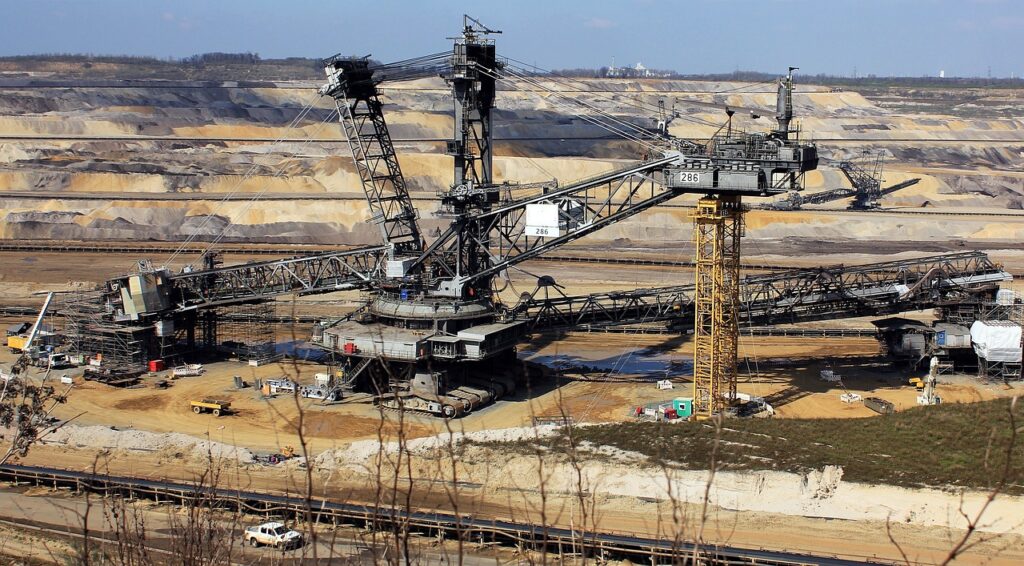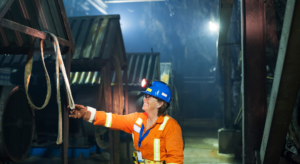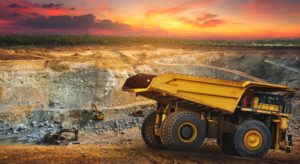The mining industry is continuously seeking new technologies and innovations. This is to improve productivity, efficiency, and ultimately profitability. One area garnering increasing interest is optimizing the logistics of moving raw ores. This is from mines to downstream processing facilities. Traditionally, mines have transported the total run-of-mine material, regardless of ore grade. It results in the movement of large amounts of waste rock. Moreover, new sensor-based ore sorting solutions now make it possible to separate waste from value minerals during transit. So, it provides an opportunity to dramatically improve mining logistics. Let us know more about in-transit ore sorting in this article.
The Logistics Bottleneck in Mining Operations
Mining logistics involves the transportation of raw ores from the mine to a mill. It also includes a smelter for processing into salable metals or minerals. So, for many mining companies, logistics represent one of the largest operational costs. It is second only to onsite production and processing. Furthermore, transport distances can be substantial, sometimes hundreds of kilometers.
Traditionally, mines have transported total run-of-mine output with little differentiation based on ore grade. This results in large amounts of low-grade material and waste rock being hauled over long distances. As a result, it consumes time, energy, and cost. So, while some waste material is inevitably extracted during mining, removing barren rock earlier in the material flow could yield dramatic savings.
Sensor-based ore sorting solutions now provide this capability. It makes it possible to sort out waste rock and improve logistics efficiency. Moreover, performing this differentiation early on, while the material is in transit, is emerging as an intriguing new opportunity in mining. Now let us understand what is In-transit ore sorting.
What is In-Transit Ore Sorting?
In-transit ore sorting refers to differentiating and separating ores based on grade. This is while the material is being conveyed between locations. This is achieved by installing sensor systems and sorting mechanisms. It is along conveyors, rail lines, or other transportation conduits.
As raw material passes by the sensors, properties such as chemical composition, color, density, or other attributes are rapidly analyzed. The sensor data feeds into algorithms that determine the value of the material. Furthermore, actuators then mechanically divert lower-value rock before it reaches downstream processes.
This creates two defined material streams – higher grade ore sent on for processing, and barren waste rock removed. By screening out obvious waste rock earlier, the reduction in overall transported tonnages occurs. As a result, it improves logistics efficiency.
There must be a lot of technologies that enable this sorting, isn’t it? Let us look at those technologies.
Technologies Enabling In-Transit Ore Sorting
Recent advancements in sensor technologies, data analytics, and materials handling automation enable in-transit ore sorting. Key technical innovations include:
- High-speed sensor arrays
Systems like hyper-spectral cameras, laser-induced breakdown spectroscopy (LIBS), and prompt-gamma neutron activation analysis (PGNAA) can rapidly scan material properties.
- Powerful onboard computers
Analyze sensor data in real-time and execute precise material characterization and grade estimates.
- Advanced data analytics and machine learning
Training models on sample ore data optimizes grade characterization accuracy.
- Actuators and digital controls
Mechanisms like pneumatic jets, paddle diverters, or fast-acting gates to separate material fractions in real-time.
- Conveyor tracking
Allows precise spatial tracking of material for accurate separation at speed.
These technologies now make possible reliable, real-time, high-throughput sensing and sorting that was not feasible even a few years ago. Furthermore, their maturation is what truly enables in-transit ore sorting to be viable.
Let us see the benefits of In-transit sorting in the section ahead.
Potential Benefits of In-Transit Ore Sorting
Implementing intelligent in-transit ore sorting has the potential to profoundly impact mining logistics efficiency and costs, including:
- Reduced haulage
Removing waste rock early minimizes overall tonnages transported. So, for some mines, reductions up to 30% are possible.
- Lower energy and emissions
Fewer tonne-km directly reduces fuel consumption and carbon emissions from haul trucks or trains.
- Higher-grade material for processing
Results in better recoveries and throughput at downstream facilities.
- Increased equipment life
Removing diluting material results in less wear on crushers, mills, and concentrators.
- Improved safety
Reduced haul truck traffic lowers accident risk on mine roads.
- Unlocking stranded deposits
Makes mining of lower-grade or complex ores economically feasible by reducing dilution issues.
- Dynamic blending control
Real-time compositional data enables smart blending to achieve target grades.
When implemented effectively, these benefits can be significant and quickly translate into measurable cost savings and productivity gains for mining companies.
What are the various configurations for in-transit sorting? Let us find out.
Deployment Models for In-Transit Sorting
There are several potential configurations for deploying in-transit ore sorting solutions:
- Underground Sorting
Sorting sub-economic material out of the flow before reaching the surface. Moreover, it reduces underground haulage, hoisting, and ventilation needs.
- Railcar Sorting
Installation of sensors and automated separation systems on mine rail loadout lines. It also enables sorting during train loading.
- In-Plant Sorting
Sorting after primary crushing but before grinding circuits. It also removes dilution before energy-intensive size reduction.
- Port Facility Sorting
For seaborne concentrates, provides final waste removal before offshore transport.
The ideal deployment solution depends on operational parameters. It includes mine layout, existing infrastructure, haulage routes, and processing plant design. Moreover, an engineering assessment is recommended to determine the optimal implementation configuration.
Now you must be wondering if there are any challenges to the adoption. Well, there are. So, let us look at them ahead.
In-Transit Ore Sorting: Challenges to Adoption
While promising, in-transit ore sorting does come with some implementation hurdles that need to be evaluated:
- Upfront capital cost
Installing proprietary sorting systems requires capital expenditure and site modifications. The ROI also needs to be assessed.
- Integration complexity
Challenges interfacing sorting systems with existing infrastructure and coordinating material flows.
- Monitoring for consistency
To maintain algorithmic accuracy and sorting performance, ongoing calibration and sampling require attention to prevent drift.
- Material segregation
Systems need integrated data tracking to maintain segregation after sorting.
- Freezing conditions
Certain technologies like LIBS scanning do not perform well in sub-zero temperatures. So, protection or alternative sensing is required.
- Material degradation
Assessing the impacts of sorting is necessary to avoid generating excessive fines.
While not impossible, these factors should be carefully considered when examining feasibility.
To Sum Up
As mines pursue innovations to remain globally competitive, intelligent transit ore sorting presents a compelling opportunity. This is to realize step-change improvements in logistics efficiency. Moreover, sensor technologies enable reliable differentiation and separation of value mineralization. This is from waste rock early in the mining process flow. As a result, this provides measurable benefits in reduced haulage, fuel and energy savings, higher recoveries, and lower operating costs.
To assess applicability for their unique mining operations, companies are encouraged to attend 4th Mining 4.0: Roadmap For The Future 2024. This leading industry summit in Phoenix, AZ on 17-18th January 2024 will examine the current state and future direction of in-transit ore sorting technology and many more areas like electrified mining machinery, digital twins, connectivity, and more. Furthermore, attendees will get real-world implementation case studies. So, attendees will come away with an in-depth perspective on how transit ore sorting could impact their transport logistics and also an understanding of critical factors for success in Mining 4.0.





